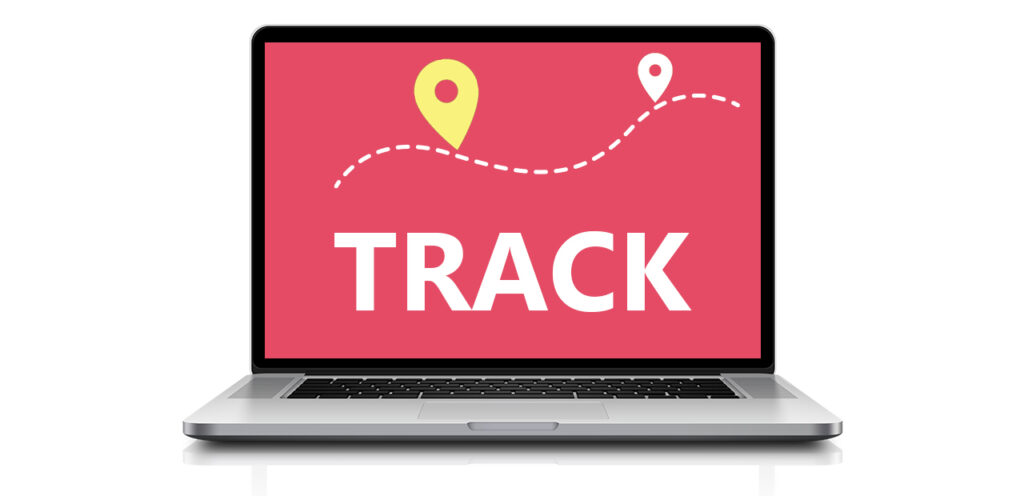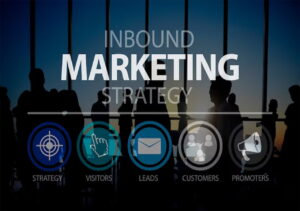
Google Ads for eCommerce – The Ultimate Sales Machine

For many eCommerce businesses, Google Ads for eCommerce is one of the main marketing channels. In fact, according to research studies, Google Ads contributes to a significant 18% share of total eCommerce revenue. So, if you’re looking to dive into Google Ads or aiming to enhance your current results, this detailed guide is tailored just for you.
In the competitive world of eCommerce, Google Ads has become a vital marketing channel for driving revenue and growth. So, let’s explore the power of Google Ads, including essential statistics and benefits, different campaign types, insights on setup and optimization, and advanced strategies for sustained success.
Get ready to unlock the full potential of Google Ads and skyrocket your eCommerce business.

What is Google Ads for eCommerce?
Google Ads for eCommerce refers to the use of Google’s advertising platform to promote and market eCommerce businesses. It is a digital marketing tool that lets eCommerce businesses create and display ads on Google’s search results pages, partner websites, and other Google platforms.
With Google Ads, eCommerce businesses can —
- target specific audiences,
- bid on relevant keywords,
- and showcase their products or services to probable customers.
By leveraging the power of Google Ads, eCommerce businesses can increase their online visibility, drive targeted traffic to their websites, and finally boost sales and revenue.
The Power of Google Ads for eCommerce
Google Ads holds tremendous power in driving eCommerce success. With its robust platform and advanced targeting capabilities, businesses can reach their target audience precisely and maximize their online visibility.
Google Ads Statistics for e-Commerce Businesses
Let’s explore the Google Ads Statistics for e-commerce Businesses. These statistics show that Google Ads can be a very effective way to drive sales for e-commerce businesses.
Google Dominates the Market Share
With a market share of 83.84%, Google is the go-to search engine for Internet users, making it an ideal platform for running ads and reaching a vast audience. In the UK, Google holds a market share of 86.31%.
Click-through Rates Indicate Engagement
According to HubSpot’s Annual State of Marketing Report, 63% of consumers have clicked on a Google ad. This highlights the effectiveness of Google Ads in driving user engagement and enticing viewers to take action.
Mobile Ad Spending Favors Google
As mobile shopping continues to rise, 33% of mobile ad spending is directed towards Google. This presents a lucrative opportunity for eCommerce businesses to promote their offerings and capture mobile users’ attention.
Strong Ad Revenue Growth
Google’s ad revenue continued to soar, reaching $54.48 billion in Q3 2022. This consistent growth demonstrates the effectiveness and popularity of Google Ads as an advertising platform.
Positive ROI
Google Ads delivers a strong return on investment (ROI), estimated at 8:1 according to Google. This indicates that businesses generate $8 in profits for every $1 spent on Google Ads, making it a financially rewarding investment.
Conversion Rates Showcase Success
The typical conversion rate on Google Ads is 4.40% on the search network, indicating a significant number of successful conversions for businesses. On the display network, the conversion rate stands at around 0.57%.
These statistics collectively emphasize the power and effectiveness of Google Ads for eCommerce businesses, offering a vast reach, engagement, strong revenue growth, and positive ROI.

How Google Ads Benefits eCommerce Business
Google Ads collectively empower eCommerce businesses to enhance their visibility, target the right audience, optimize their marketing budgets, and track the success of their campaigns effectively. Thus, you can achieve substantial growth and maximize your returns in the competitive eCommerce landscape.
Increased Visibility and Reach
Google Ads provide an excellent opportunity for eCommerce businesses to enhance their online visibility and reach a broader audience. With billions of daily searches, Google Ads ensures your products or services are prominently displayed to potential customers actively seeking relevant information.
Targeted Advertising
One of the primary advantages of Google Ads is its precise targeting capabilities. You can define your target audience relied on factors such as keywords, demographics, location, and interests. This allows you to tailor your ads specifically to the people most likely to be interested in your offerings, maximizing your chances of driving qualified traffic and conversions.
Cost-effective Marketing
Google Ads operates on a pay-per-click (PPC) model where you only pay when someone clicks on your ad. This makes it a cost-effective marketing option as you have control over your budget and can optimize your ad spend based on performance. Additionally, with the ability to set bid limits and daily budgets, you can ensure you’re getting the most out of your advertising investment.
Measurable Results and ROI Tracking
Google Ads provides robust tracking and analytics tools that help you measure the performance of your campaigns accurately. You can thus track key metrics like impressions, clicks, conversions, and cost per conversion, enabling you to analyze the effectiveness of your ads and make data-driven decisions. This level of measurement helps you optimize your campaigns for maximum ROI and continuously improve your advertising strategies.

Types of Google Ads Campaigns for e-Commerce
Google Ads offers various campaign types tailored specifically for e-commerce businesses. Each campaign type serves a unique purpose and targets different stages of the customer journey. Let’s explore these campaigns in detail, including examples and their respective benefits.
Google Search Campaigns
Google Search campaigns are text-based ads that appear in search engine results when users enter relevant keywords. These ads are highly effective in capturing users actively searching for products or services.
For instance, a clothing retailer can create a Google Search campaign targeting the keyword “women’s summer dresses” to showcase their products to users searching for that specific item.
Google Shopping Campaigns
Google Shopping campaigns display product ads at the top of search results, featuring product images, prices, and store information. These visual ads provide a compelling way to showcase your products to potential customers.
For instance, a furniture store can set up a Google Shopping campaign to display images and prices of their various furniture pieces when users search for relevant keywords like “modern sofas.”
Google Remarketing Campaigns
Google Remarketing campaigns target those who have previously visited the website or interacted with your brand. By using cookies, you can display targeted ads to remind these users of your products or services as they browse other websites or use Google services.
For instance, an electronics retailer can show ads for a previously viewed smartphone model to entice the user to return and make a purchase.
Google Display Campaigns
Google Display campaigns allow you to reach potential customers across a vast network of websites, mobile apps, and video platforms. These visually appealing images or video ads help increase brand awareness and engagement.
For example, a home decor store can create display ads showcasing their latest products and have them appear on relevant lifestyle blogs or home improvement websites.
Google Video Campaigns
Google Video campaigns enable you to run video ads on platforms like YouTube, reaching a massive audience through engaging visual content. Video ads can include product demonstrations, brand stories, or customer testimonials.
For instance, a beauty brand can create a video ad demonstrating the use and benefits of its skincare products to captivate and inform viewers.
Each of these campaign types offers unique advantages and can be customized to suit your e-commerce business goals. By leveraging the right mix of campaign types, you can properly reach your target audience, drive conversions, and maximize the success of your online store.

Getting Started with Google Ads for eCommerce
Getting started with Google Ads for eCommerce is an exciting journey that can propel your online business to new heights. Here’s a step-by-step guide to help you set up your Google Ads account:
Setting Up Your Google Ads Account
Creating a Google Ads account
To begin, visit the Google Ads website and click on “Start Now” You’ll be prompted to sign in to your Google account or sign up for a new one if you don’t have one already. Follow the instructions to finish the account creation procedures.
Understanding Account Structure and Campaign Types
Once your account is set up, it’s essential to familiarize yourself with the account structure and different campaign types available in Google Ads. The account structure typically consists of —
- campaigns,
- ad groups,
- ads,
- and keywords.
Each campaign can have multiple ad groups, each targeting specific themes or products. Take the time to explore and understand these components to manage your campaigns effectively.
Defining Campaign Goals and Budget
Before launching your campaigns, it’s crucial to define your objectives and set a budget. Consider what you want to achieve with your ads, whether it’s —
- driving sales,
- increasing website traffic,
- or boosting brand awareness.
This will help you select the most appropriate campaign types and set realistic goals. Determine your budget based on your business’s financial capabilities and the expected return on investment (ROI) from your campaigns.
Conducting Keyword Research for eCommerce Campaigns
Keyword research is a crucial step in running successful eCommerce campaigns on Google Ads. Here’s an easy-to-follow guide on how to conduct keyword research for your eCommerce business:
Identifying Relevant Keywords for Your eCommerce Business
Begin by making a list of keywords that are relevant to your eCommerce business. Think about the products or services you offer, industry-specific terms, and the specific needs or pain points your target audience may have. Put yourself in your customers’ shoes and consider the words they would use to search for your products.
Utilizing Keyword Research Tools for Better Insights
Keyword research tools can provide valuable insights and help you increase your list of potential keywords. Luckily, Google’s Keyword Planner is a free tool that allows you to —
- discover new keyword ideas,
- see search volumes,
- and understand the level of competition for specific keywords.
Other popular keyword research tools include SEMrush, Ahrefs, and Moz Keyword Explorer. These tools provide additional data such as keyword difficulty, related keywords, and search trends.
Incorporating Long-tail Keywords for Specific Targeting
Long-tail keywords are longer and more precise keyword phrases that typically have lower search volumes but higher conversion potential. They allow you to target a more niche audience and capture highly interested customers.
For example, instead of targeting a broad keyword like “shoes,” you can focus on long-tail keywords like “women’s running shoes for flat feet.” Long-tail keywords assist you in ranking higher in search results and attracting more qualified leads.
When conducting keyword research, it’s important to strike a balance between high-volume keywords that drive traffic and low-competition keywords that increase the likelihood of conversions. Aim to target a mix of broad and long-tail keywords that align with your business goals and target audience.

Creating Compelling Ad Copy
Creating compelling ad copy is essential to attract the attention of your audience and drive conversions. Here’s a simple guide on crafting effective ad copy for your Google Ads campaigns:
Crafting Attention-grabbing Headlines
The headline is the first thing users see in your ad, so it’s crucial to make it attention-grabbing. Use actionable language, highlight unique selling points, or create a sense of urgency to entice users to click.
For example, “Get 50% Off on All Women’s Shoes Today!” is more compelling than a generic headline like “Shop Women’s Shoes.”
Writing Persuasive Ad Descriptions
The ad description provides an opportunity to expand on your headline and convince users to take action. Clearly —
- communicate the benefits of your product or service,
- emphasize any exclusive offers or promotions,
- and address the pain points of your target audience.
Use concise and persuasive language that drives interest and encourages clicks. For example, “Upgrade Your Home with Our High-Quality Furniture – Shop Now for Free Shipping!”
Incorporating Relevant Keywords in Ad Copy
Including relevant keywords in your ad copy is crucial for two reasons:
- It helps your ad appear for relevant searches,
- and it reassures users that your ad is relevant to their query.
Incorporate keywords naturally into your headlines and descriptions, but avoid keyword stuffing. For example, if you’re targeting the keyword “affordable running shoes,” your ad copy could include phrases like “Shop our affordable running shoes collection for unbeatable prices!”
Additionally, consider using ad extensions to enhance your ad copy. Ad extensions allow you to add additional infos or call-to-action buttons, making your ads more compelling and informative. Popular ad extensions include —
- site links (additional links to specific pages on your website),
- call extensions (phone numbers for users to directly call your business),
- and promotion extensions (displaying specific promotions or offers).
Lastly, regularly test different variations of your ad copy to see what resonates best with your audience. Monitor the performance metrics, such as click-through rates (CTR) and conversion rates, to determine which ad copy drives the highest engagement and conversions.
Optimizing Google Ads Campaigns for eCommerce Success
You have to consider several factors to optimize Google ads campaigns for eCommerce success. Let’s explore the following:
Targeting the Right Audience
Targeting the right audience is crucial for optimizing Google Ads campaigns and achieving eCommerce success. Here’s a step-by-step guide on how to effectively target your audience:
Defining Your Target Audience for eCommerce Campaigns
Start by understanding your ideal customer profile. Consider demographic factors like age, gender, location, and income level. Additionally, analyze psychographic elements like interests, behaviors, and preferences related to your products or services. By identifying your target audience, you can modify your ad messaging and reach those most likely to engage with your offerings.
Utilizing Audience Targeting Options in Google Ads
Google Ads provides various audience targeting options to help you reach specific groups of people. These options include:
Demographic Targeting : Set specific parameters for age, gender, and household income to narrow down your audience.
Location Targeting : Choose the geographic locations where you want your ads to appear, whether it’s a specific city, region, or country.
Interest Targeting : Target users relied on their interests and behaviors. Google analyzes users’ online activities and identifies their interests to help you reach a relevant audience.
Remarketing : Show ads to those who have interacted with your website or app in the past. This lets you re-engage with potential customers who have already shown interest in your products or services.
Creating Tailored Ad Groups for Different Audience Segments
To optimize your campaigns further, create ad groups that align with specific audience segments. This allows you to customize your messaging and offers based on the preferences and needs of each segment.
For instance, if you sell clothing for both men and women, you can create separate ad groups targeting each gender with tailored ad copy and relevant product offerings.
When targeting your audience, remember to monitor and analyze the performance of your campaigns continuously. Keep a close eye on key metrics such as click-through rates (CTR), conversion rates, and return on ad spend (ROAS). This data will help you refine your targeting strategies and make necessary adjustments to optimize campaign performance.

Enhancing Ad Performance with Ad Extensions
Ad extensions are a powerful tool to enhance the performance and effectiveness of your Google Ads for eCommerce. Here’s a simple guide on how to utilize ad extensions to improve your ad performance:
Exploring Different Types of Ad Extensions for eCommerce Businesses
Google Ads offers various ad extensions that allow you to provide additional information and engage users in different ways. Some commonly used ad extensions for eCommerce businesses include
Site Link Extensions : These extensions enable you to include additional links to specific pages on your website within your ad. Use site link extensions to direct users to relevant product categories, special offers, or specific landing pages. This not only provides more visibility and engagement opportunities but also improves the user experience by directing them to the most relevant content.
Callout Extensions : Callout extensions allow you to highlight key selling points, special offers, or unique features of your products or services. Use this extension to showcase benefits like free shipping, 24/7 customer support, or hassle-free returns. By highlighting these compelling details, you can grab the attention of potential customers and differentiate yourself from competitors.
Implementing Site Link Extensions for Better Engagement
To implement site link extensions, identify the most relevant pages on your website that align with your ad’s objectives. These could include —
- product category pages,
- best-selling products,
- or landing pages optimized for specific campaigns.
By offering users direct access to these pages, you increase the likelihood of engagement and conversions. Ensure that each site link has a clear and concise description that entices users to click.
Utilizing Callout Extensions to Highlight Key Selling Points
When implementing callout extensions, focus on highlighting the unique selling points of your eCommerce business. Consider the factors that set you apart from competitors and resonate with your target audience.
For example, if you offer free shipping, a wide selection of products, or exclusive discounts, use callout extensions to showcase these advantages. Keep the callout text short, impactful, and compelling to entice users to click on your ad.
Maximizing Conversion Rates with Landing Page Optimization
Maximizing conversion rates through landing page optimization is crucial for driving successful eCommerce campaigns. Here’s a step-by-step guide on how to optimize your landing pages for better conversions:
Designing Landing Pages Optimized for Conversions
When designing your landing pages, remember the following best practices:
Clear and Concise Messaging : Ensure that your landing page clearly communicates the value proposition of your product or service. Use compelling headlines, concise descriptions, and bullet points to highlight the key benefits and features.
Engaging Visuals : Incorporate visually appealing images or videos that showcase your products or services. High-quality visuals can captivate visitors and increase their interest in your offerings.
Simple and Intuitive Layout : Maintain a clear and simple layout. Try using headings, subheadings, and bullet points to break up content and make it scannable. Place important information, such as pricing or key selling points, prominently on the page.
Mobile Optimization : With the increasing use of mobile devices, ensure that your landing pages become mobile-friendly and responsive. Optimize the layout and design to provide a seamless experience for users across different devices.
Implementing Clear and Compelling Call-to-action (CTA) Buttons
Your landing page should include a clear and prominent call-to-action (CTA) button that guides visitors toward the desired action. Make sure the CTA button stands out visually and uses action-oriented language that encourages users to take the desired action.
For example, “Buy Now,” “Sign Up,” or “Get Started” are effective CTA phrases. Place the CTA button in a strategic location on the page where it is easily visible.
A/B Testing and Continuous Improvement of Landing Pages
Optimization is an ongoing process. Implement A/B testing to compare different variations of your landing pages and measure their performance. Test different elements such as headlines, visuals, CTA button placement, and color schemes to identify the most effective combinations.
Analyze the data and make data-driven decisions to flourish your landing pages continuously. Small tweaks can have a positive impact on conversion rates.
It’s essential to regularly monitor your landing page performance using analytics tools like Google Analytics. Track key metrics such as conversion rates, bounce rates, and average time on page to gauge the effectiveness of your optimizations. By identifying areas of improvement and making iterative changes, you can steadily increase your conversion rates over time.

Monitoring and Analyzing Google Ads Performance
Monitoring and analyzing the performance of your Google Ads campaigns is essential for optimizing your eCommerce campaigns.
Tracking Key Metrics and KPIs
Here’s a guide on tracking key metrics and key performance indicators (KPIs):
Understanding Essential Metrics for eCommerce Campaigns
Several key metrics can provide valuable insights into the performance of your Google Ads campaigns. Some essential metrics to track include:
- Impressions: The number of times your ads are shown to users.
- Clicks: The number of times users click on your ads.
- Click-through rate (CTR): The percentage of users who click on your ads after seeing them. It is calculated by dividing the number of clicks by the number of impressions.
- Conversion rate: The percentage of users who complete a desired action, such as making a purchase or filling out a form, after clicking on your ads.
- Cost per click (CPC): The average cost incurred for each click on your ads.
- Cost per conversion: The average cost incurred for each conversion or desired action.
- Return on ad spend (ROAS): The ratio of revenue generated to the amount spent on advertising. It helps measure the effectiveness of your ad spend.
- Cost per acquisition (CPA): The average cost incurred for acquiring a customer or completing a desired action.
Monitoring Click-through Rates (CTRs) and Conversion Rates
Click-through rates (CTRs) indicate the percentage of users who click on your ads after seeing them. Higher CTRs generally indicate that your ads are compelling and relevant to users. Monitor CTRs across your campaigns and ad groups to identify areas that may require improvement, such as ad copy or targeting.
Conversion rates represent the percentage of users who complete a desired action after clicking on your ads. By tracking conversion rates, you can evaluate the effectiveness of your campaigns in generating desired outcomes. Analyze conversion rates by different campaigns, ad groups, or keywords to identify high-performing areas and optimize underperforming ones.
Analyzing Return on Ad Spend (ROAS) and Cost Per Acquisition (CPA)
ROAS and CPA are critical metrics for measuring the profitability and efficiency of your Google Ads campaigns.
ROAS calculates the revenue generated for every dollar spent on advertising. A higher ROAS indicates better campaign performance. Monitor ROAS at the campaign and ad group levels to identify areas that are generating positive returns and those that may require adjustments.
CPA measures the average cost incurred to acquire a customer or achieve a desired action. Lower CPA values signify more cost-effective campaigns. Regularly track CPA to ensure that your advertising costs align with your business goals and profitability.

Utilizing Google Ads Conversion Tracking
Utilizing Google Ads conversion tracking is crucial for measuring the effectiveness of your eCommerce actions and optimizing your campaigns. Here’s a concise guide on how to leverage conversion tracking:
Setting Up Conversion Tracking for eCommerce Actions
Use the Google Ads interface to create conversion actions that align with your eCommerce goals. Define specific actions as conversions, such as completed purchases, sign-ups, or form submissions.
Monitoring and Analyzing Conversion Data
Regularly review your conversion data in the Google Ads interface. Monitor the number of conversions, conversion rates, and conversion values to gauge the performance of your campaigns.
Optimizing Campaigns Based on Conversion Insights
Utilize the conversion data to make data-driven decisions and optimize your campaigns. Identify underperforming keywords or ad groups and make adjustments to improve their conversion rates. Allocate more budget and resources to campaigns that generate higher conversion rates and return on investment.
Advanced Strategies for Google Ads and eCommerce Growth
Let’s explore the advanced strategies for Google ads and eCommerce growth.
Remarketing and Dynamic Remarketing
Remarketing campaigns allow you to target website visitors who have previously shown interest in your eCommerce business. By creating personalized ads, you can re-engage these users and increase the likelihood of conversion.
Dynamic remarketing takes it a step further by dynamically showcasing products or services that visitors have viewed, creating highly relevant and personalized ads. This targeted approach significantly boosts conversion rates and drives eCommerce growth by reminding potential customers of products they are interested in and encouraging them to complete their purchase journey.
Shopping Campaigns for eCommerce Success
Setting up Google Shopping campaigns enables you to showcase your products in search results with images and details. Optimize your product feed for better visibility, ensuring accurate and appealing information. Monitor and improve shopping campaign performance by analyzing metrics like impressions, clicks, and conversions. These strategies —
- maximize visibility,
- attract the right audience,
- and optimize your eCommerce growth.

Common Mistakes to Avoid in Google Ads for e-Commerce
Common mistakes to avoid in Google Ads for e-commerce include —
- crafting unappealing ad copy,
- failing to target the right audience effectively,
- neglecting to optimize landing pages for conversions,
- and not tracking and analyzing performance metrics.
Additionally, not adapting to changes and updates in the Google Ads platform can hinder campaign success. By avoiding these mistakes, e-commerce businesses can —
- enhance their ad effectiveness,
- reach the desired audience,
- optimize user experience,
- measure campaign performance,
- and stay up-to-date with the evolving digital advertising landscape.
Ad Fraud Protection for E-commerce
Ad fraud poses a significant threat to e-commerce businesses, but there are measures to combat it.
- Understand the impact of ad fraud on your campaigns, including wasted ad spend and inaccurate performance data.
- Implement ad fraud protection measures like using ad verification tools, monitoring traffic quality, and partnering with reputable ad networks.
- Adhering to best practices, such as regularly reviewing campaign data, analyzing traffic sources, and staying informed about emerging ad fraud techniques, can help prevent and mitigate the risks associated with ad fraud, ensuring the effectiveness and integrity of your e-commerce advertising efforts.
Wrapping Up
In essence, the importance of Google Ads for e-commerce businesses cannot be overstated. With its effectiveness and potential for growth, Google Ads is a must-have tool to boost sales and revenue in the digital marketplace. Embrace the power of Google Ads for e-commerce and unlock new opportunities for success in your online business endeavors.
FAQs
The cost of Google eCommerce Ads ranges from $1000 to $10,000 per month, with an average CPC of $1 to $2 for the Google Search Network and $1 for the Google Display Network in 2023.
Google Ads can pay you approximately $0.2 to $2.5 per 1,000 views, depending on factors like your site’s content, user location, time spent on the site, and device breakdown.
A recommended monthly budget for Google Ads typically ranges from $1,000 to $10,000, taking into account factors like the client, industry, objectives, and targeted locations.

Solayman Rumon
A writer, blogger, and traveler. Being creative and making things keep me happy is my life motto.
Popular Posts


10 Proven Tips to Increase eCommerce Sales in 2024

eCommerce Sales Funnel Strategies for eCommerce Success

37 Best Proven Tips to Increase Your eCommerce Conversion Rate

TikTok Marketing: Creating a Successful Strategy in 2024

15 Tips for Building a Successful Omnichannel E-commerce Strategy

21 Best Inbound Marketing Strategies for E-commerce Success

16 Must-Have Facebook Strategies for E-commerce
More Posts

18 Best eCommerce Design Agencies in 2024

7 Tips on How to Build an Ecommerce Website from Scratch

10 Proven Tips to Increase eCommerce Sales in 2024


